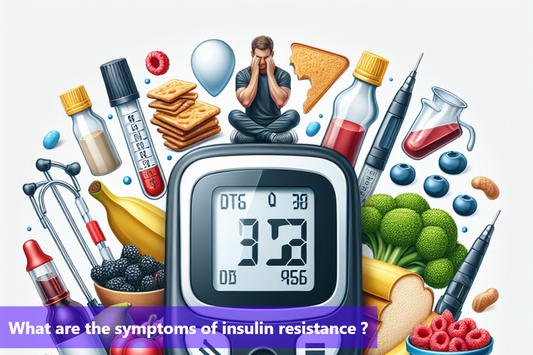An insulin pen is a convenient device for administering insulin to manage diabetes. It consists of a cartridge filled with insulin and a dial to measure the dosage. Using an insulin pen is simple and involves attaching a needle, dialing the correct dose, and injecting the insulin subcutaneously. Compared to traditional insulin injections with syringes, insulin pens offer several benefits. The Allstar insulin pen is a popular choice due to its ease of use. Insulin pen needles are available in different lengths and gauges. Overall, insulin pens provide a convenient way to manage diabetes.
Types of Insulin Pens
Insulin pens are devices used by people with diabetes to administer insulin. They come in various types, each with its own features and benefits. Here are the common types of insulin pens:
Disposable Pens: These pens come prefilled with insulin and are discarded after the insulin cartridge is empty. They are convenient for those who prefer not to deal with insulin vials and syringes. Disposable pens usually come in packs containing multiple pens.
Reusable Pens: Reusable pens have a replaceable insulin cartridge, which needs to be loaded with insulin when empty. Once the cartridge is empty, it can be replaced with a new one. The pen device itself is reused multiple times.
Prefilled Pens: Prefilled pens are disposable pens that come prefilled with a specific type and dose of insulin. They are ready to use out of the box and do not require any loading or preparation.
Cartridge-Based Pens: These pens use replaceable insulin cartridges. Users load the pen with a new cartridge when the current one is empty. Cartridge-based pens offer flexibility in choosing insulin types and doses.
Durable Pens: Durable pens are designed for long-term use and are typically made of higher-quality materials. They are reusable and often come with features like dose memory, which helps users track their insulin doses.
Smart Pens: Smart pens are insulin pens equipped with digital features to help users track insulin doses, monitor insulin usage patterns, and provide reminders for injections. Some smart pens can sync data with smartphone apps or cloud platforms for easier management and monitoring.
Mechanical Pens: Mechanical pens are basic insulin delivery devices without electronic components. They are manually operated by turning a dial to select the desired dose and pressing a button to administer insulin.
Disposable Prefilled Pens: These are disposable pens that come prefilled with a specific insulin type and dose. Once the insulin is used up, the entire pen is disposed of.
Using an Insulin Pen
To use an insulin pen correctly, follow these simple steps:
Preparing the Pen: Before using the insulin pen, wash your hands with soap and water. Check the label to ensure it is the correct insulin. Remove the cap from the pen and check the insulin for any particles or discoloration. If everything looks fine, proceed to the next step.
Attaching the Needle: Twist on a new needle securely. Remove the protective tab from the needle and prime the pen to remove any air bubbles. This ensures the correct dose of insulin will be administered.
Selecting the Dose: Dial the dose of insulin needed according to your healthcare provider's instructions. Make sure the dose window shows the correct number of units.
Injecting the Insulin: Pinch a fold of skin at the injection site and insert the needle at a 90-degree angle. Press the button on the pen to inject the insulin slowly and steadily. Wait for a few seconds before removing the needle to ensure the full dose is delivered.
Removing the Needle: After injecting the insulin, carefully remove the needle from your skin and dispose of it in a sharps container. Recap the pen for storage.
By following these steps, you can effectively and safely use your insulin pen for diabetes management.
Advantages and Disadvantages of Insulin Pens
Advantages:
Convenience: Insulin pens are compact, lightweight, and easy to carry, making them convenient for people who need to administer insulin injections outside of their homes.
Ease of Use: Insulin pens are user-friendly and require minimal training to operate. They typically have simple mechanisms for dose selection and injection, which can be beneficial for individuals with limited dexterity or vision impairments.
Portion Control: Pens allow for precise dosing, with adjustable dose settings that make it easier to administer accurate insulin doses, especially for individuals who require small or precise amounts of insulin.
Discreetness: Insulin pens are discreet and can be used in public settings without drawing attention. They resemble writing pens, making them less conspicuous compared to syringes and vials.
Reduced Risk of Contamination: Since insulin pens are prefilled or use replaceable cartridges, there is less risk of contamination compared to insulin vials, which require drawing insulin into a syringe multiple times.
Travel-Friendly: Insulin pens are convenient for travel, as they are portable and eliminate the need to carry bulky vials and syringes. Prefilled pens are especially convenient for air travel, as they reduce the hassle of carrying and storing insulin supplies.
Disadvantages:
Cost: Insulin pens can be more expensive than traditional vials and syringes, especially if they are not covered by insurance. Additionally, disposable pens can accumulate costs over time, as they need to be replaced frequently.
Waste: Disposable insulin pens generate more waste compared to reusable pens or vials and syringes. This can contribute to environmental concerns, especially if proper disposal methods are not followed.
Limited Insulin Types: Not all types of insulin are available in pen form, which may limit options for individuals who require specific insulin formulations. However, the availability of insulin pens has increased over time, offering more options to users.
Incompatibility with Some Insulin Regimens: Some insulin regimens, such as mixing different types of insulin in the same syringe, may not be compatible with insulin pens. Users with complex insulin regimens may find it challenging to adapt to pens.
Risk of Misuse or User Error: Although insulin pens are designed to be user-friendly, there is still a risk of misuse or user error, especially if individuals are not properly trained on how to use them. This can lead to incorrect dosing or injection technique.
Dependency on Batteries (for Smart Pens): Smart insulin pens require batteries to power their digital features. Dependence on batteries means there is a risk of the pen becoming inoperable if the battery runs out, which could be inconvenient if a user relies heavily on its digital functions.
Bottom Line
Insulin pens have revolutionized diabetes management by offering a convenient and efficient way to administer insulin. One key point is the ease of use associated with insulin pens like the Allstar, which simplifies injecting insulin for individuals with diabetes. Insulin pen needles can be easily changed to ensure proper dosing and minimize contamination. Insulin pens provide greater control and flexibility in insulin administration, streamlining the injection process and contributing to overall diabetes control.
This Blog post is an initiative by DiabeSmart, to provide accurate and Nutritionist / Doctor approved information related to Diabetes. DiabeSmart is India's first Food brand designed specifically for Diabetics, that has been clinically tested on Diabetics and Pre-Diabetics to deliver 55% - 70% lower Sugar spikes. DiabeSmart is part of Lo! Foods - India's leading brand for Everyday Functional Health foods.











